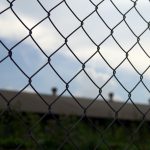Inmates Help Farmers by Nurturing Livestock Back to Health

It started as an idea to help severely drought-affected farmers, but it’s a programme that’s proving to have even greater benefits for inmates at the Cooma Correctional Centre in southern New South Wales.
Caring for the lambs
A number of inmates are already taking part in the programme, and it is continuing to grow in popularity as they accept the responsibility of caring for tiny lambs, and finding out how rewarding it can be to nurture small, sick, or injured animals to full health.
The programme is the first of its kind in New South Wales and it’s proving to have a positive impact on those farmers who desperately need the help, as well as for the local community who are engaged in donating blankets and milk and bottles for the tiny lambs, as well as for the inmates themselves who are building pens, and caring for the lambs around the clock.
Rehabilitation comes in all forms
Time and again, studies have shown that rehabilitation programmes can be a critical factor in determining whether or not an inmate reoffends once leaving prison. Activities such as sport, learning a trade, participating in further education can all have a productive effect.
For some juvenile offenders, gaining basic literacy skills can also make a big difference to whether they get their lives on track, or they don’t. Even programmes that tackle addiction provide inmates with a chance to take a look at their own behaviour, and how it impacts others. In these self-development based programmes, they’re also taught skills for problem solving and to make more positive life choices.
But sadly, In New South Wales, not all inmates participate in rehabilitation programmes. Recent figures suggest that only 22.4 per cent of prison inmates are participating in education or training.
For unsentenced inmates being held on remand, the situation is even worse – they have no access to education or training whatsoever. And with court backlogs resulting in remand inmates waiting an average of 18 months for trial, this means that many inmates are simply languishing – not productively utilising their time behind bars, or participating in anything that may make a difference to their future once they leave prison.
There’s also research which suggests that programmes which engage inmates on a physical, intellectual and emotional level also help to break down the strong anti-social norms that that exist behind bars, where the culture is defined by career criminals and decrees ‘every man for himself’ and a mentality of ‘them versus us’ which only sets people up for isolation, and the inability to function in society.
When inmates have no skills to change their path, no ability to meet new people and forge relationships outside of the familiar, as well as onerous parole conditions that make it difficult to find and hold down employment, then it’s no wonder they feel a strong pull towards old habits when they leave prison. This is one of the reasons why studies show criminals who complete non-custodial sentences have lower re-offending rates than those who got to gaol.
Reducing re-offending rates
The New South Wales Government allocated $330 million dollars over four years towards reducing re-offending, and yet earlier this year, numbers released by the Bureau of Crime Statistics and Research (BOCSAR) showed that 41.4 per cent of the 18,520 adults released from prison in 2017 had re-offended within the year to 2018.
For child offenders, the post-prison outcomes are more dire – of the 1335 children released from prison in 2017, 864 – or 64.7 per cent – went on to reoffend within 12 months.
By way of explanation, when the figures were reported, Corrective Services said that the four-year funding announced in 2016 was not “fully bedded down” until late last year and that while “funding commenced in the 2016-17 financial year, the initiatives were staged for implementation between 2016-17 and 2017-18. Some initiatives required competitive tendering, others required new infrastructure or new legislation.”
Many would argue though, that while there is most certainly a need for oversight and strategic planning around rehabilitation programmes for offenders, there is also a very real danger that bureaucrats can cause unnecessary ‘paralysis by analysis’ when, after all, some of the best ideas are the most uncomplicated, such as the caring for the lambs underway at Cooma, which started without any real fanfare or red tape.
It started simply because farmers needed help and the local inmates had the capacity to pitch in.







